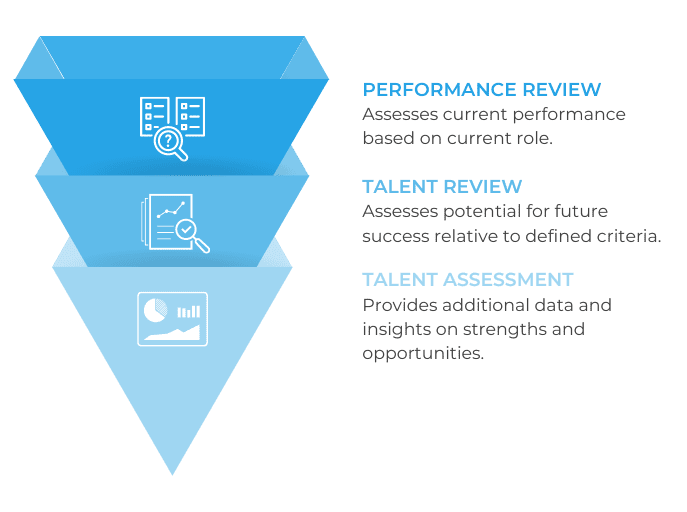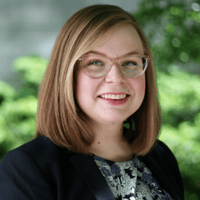Getting to know your talent: determine the future potential of your employees and identify gaps.
Getting to Know Your Talent
In Part 1 of this series, we talked about the steps you should take to define an ideal talent profile, and the benefits of hiring internally . . . but do you have a clear sense of the future potential of your leaders, and specific development gaps?
We recently shared a case study of a Canadian organization that had promoted several emerging leaders into Vice President roles. The organization wanted to support these leaders into Enterprise Leadership roles, and foster their ability to drive organizational results. However, when it came to assessing the potential of these employees, they were primarily relying on anecdotal evidence and the perspective of the functional leaders.
So what can you do to determine the future potential of your employees, and identify specific gaps for planning purposes? In other words: how can you get to know your talent better?
Informal mechanisms
There are certainly day-to-day opportunities to get to know talent in your organization. Indeed, within functional areas there are many chances to get to know talent at multiple levels through project work and routine interactions. However, if you want to truly understand the capabilities of your employees, you need to look beyond your immediate functional area.
A survey conducted by Egon Zehnder showed that the vast majority of senior executives considered informal mechanisms – like rotational opportunities and strategic project work – to be the most important way to accelerate their career. Here are a few ways to approach this.
Rotational opportunities
Offer employees the chance to work in different departments or roles temporarily. This allows them to gain diverse experiences and expand their skill sets. As an added benefit, leaders throughout your organization will get to know a wider pool of talent.
Mentorship and sponsorship
Encourage formal and informal mentorship and sponsorship programs that connect employees with experienced professionals from different areas. This enables cross-functional learning, networking, and knowledge sharing.
Strategic project work
Assign employees to projects that require collaboration across departments or teams. This exposes them to different areas of the organization and fosters a broader understanding of business operations.

Remember that the goal is to develop capability long term. Avoid “talent hoarding”. Thinking broadly and organizationally sometimes means you need to let go of your best people in a role.
By the time formal talent discussions roll around, your leadership team should already know the top talent across the organization.
Formal mechanisms
In most organizations, you’ll have one or two structured talent conversations per year to talk about current performance and future potential. The performance review looks back to past performance, while succession planning and talent reviews look ahead to an individual’s future potential.
These processes can be described as a funnel. At each stage we get to know more about talent and have further, focused conversations about what they can do.

For leaders, the opportunity here is to stay engaged in talent discussions, and to get to know talent outside of your functional areas. For HR, it’s important to challenge assumptions, outdated thinking and biases that can cloud leadership’s ability to fairly and effectively evaluate talent.
Integrating external assessments
For many organizations, there’s still a need or desire to learn more after the initial evaluation of talent. This is where external talent assessments can give you additional, unbiased insights on specific challenges and opportunities. They can be used to provide data about candidates for specific roles, or to guide the development of high potential talent. If you’re interested in using an external assessment provider, ask yourself these questions:
- Are the assessments that they recommend validated for your intended use?
- Do your providers have the experience and certifications to provide them?
- Can the provider benchmark the assessment results to similar roles or organizations?
- To maximize your investment, can you make sure the results are used to inform further development supports, such as career pathways, sponsorship, and dynamic development opportunities?
Remember that assessment data doesn’t replace internal talent processes. Make sure you integrate the results into your regular talent discussions.
To learn more about how external assessments can be used in practice, check out this case study. It explores the story of a relatively new senior leader who needed development to evolve into a full member of the executive leadership team and to become a stronger leader of her people.
Getting it right
As you think about how to evaluate and get to know your talent, here are some key principles to keep in mind:
- Focus on getting to know talent across the organization, not just in your functional area.
- Practice respectfully challenging assumptions in talent conversations. When evaluating your talent, the decisions should be based on relevant, recent, and supportable data points.
- People grow and change. If you’ve known a leader for many years, ask yourself if you’re evaluating them with an up-to-date view point, and avoid dated assumptions.
- Make sure external assessments are fit for purpose, and integrate them into your wider talent processes.
Take care to work through Part One and Part Two of this process – defining your talent profile and then evaluating your existing talent against it. You’ll find it can yield clarity for the final step: implementing new approaches and development supports, which we’ll explore in the third and final part of this series.

Sarah Skyvington is an experienced talent management specialist who works closely with leaders to create talent strategies that support business results. She holds an M.A. in Industrial/Organizational Psychology and is certified in numerous assessments, including the Hogan Suite, Birkman Method and Leadership Effectiveness Analysis 360. As Principal Consultant, she specializes in talent strategy, assessment, succession management and organizational development.
Recent Posts
How to be Productive and Have an Impact While Leading Remotely
Verity International | 3 min read
Seven tips for managing yourself and engaging your team.
Building Effective Teams: A Guide with the GRPI Model
Verity International | 5 min read
The GRPI Model is a practical tool to help you foster effective teamwork using Goals, R..
The Path to Strategic Talent Management │ Part 3
Sarah Skyvington | 6 min read
How to Define a Winning Talent Strategy with Stakeholder Engagement.
